Related Research Articles
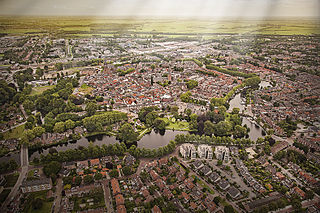
Woerden is a city and a municipality in central Netherlands. Due to its central location between Amsterdam, Rotterdam, The Hague, and Utrecht, and the fact that it has rail and road connections to those cities, it is a popular town for commuters who work in those cities.
Theophanes the Confessor was a member of the Byzantine aristocracy who became a monk and chronicler. He served in the court of Emperor Leo IV the Khazar before taking up the religious life. Theophanes attended the Second Council of Nicaea in 787 and resisted the iconoclasm of Leo V the Armenian, for which he was imprisoned. He died shortly after his release.
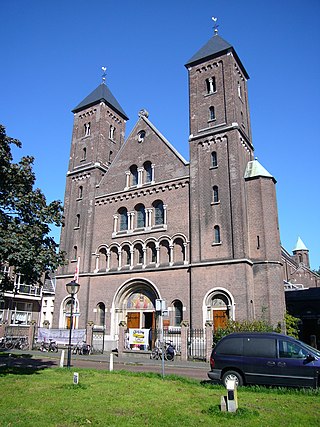
The Old Catholic Church of the Netherlands, sometimes Jansenist Church of Holland, is an Old Catholic jurisdiction originating from the Archdiocese of Utrecht (695–1580). The Old Catholic Church of the Netherlands is the mother church of the Old Catholic Union of Utrecht.
John Malalas was an East Roman chronicler from Antioch.

Philip III the Good ruled as Duke of Burgundy from 1419 until his death in 1467. He was a member of a cadet line of the Valois dynasty, to which all 15th-century kings of France belonged. During his reign, the Burgundian State reached the apex of its prosperity and prestige, and became a leading centre of the arts.

The Nieuwe Kerk is a 15th-century church in Amsterdam located on Dam Square, next to the Royal Palace. Formerly a Dutch Reformed Church parish, it now belongs to the Protestant Church in the Netherlands.

The Battle of Warns was a battle of the Friso-Hollandic Wars between Count William IV of Holland and the Frisians which took place on 26 September 1345. The annual commemoration of the battle is important for many nationalist Frisians. The Frisians won the battle and repelled the 'Hollanders' from the eastern coast of the Zuiderzee.

Gerard III of Guelders was the Count of Guelders and Zutphen from 1207 until his death in 1229. He was a son of Count Otto I of Guelders, and is sometimes called Gerard IV or Gerard V. Gerard married Margaretha of Brabant, the daughter of Duke Hendrik I of Brabant and Matilda of Flanders, Duchess of Brabant, in 1206.
Otto I of Guelders (1150–1207) was a Count of Guelders and Zutphen from 1182 until his death in 1207. He was a son of Duke Hendrik of Guelders and Agnes of Arnstein. He married Richardis of Bavaria in 1184. Richardis was a daughter of Otto I Wittelsbach, Duke of Bavaria.
Chronographia, meaning "description of time", and its English equivalents, Chronograph and Chronography, may refer to:
Johannes a Leydis or Jan Gerbrandszoon van Leiden was a Dutch chronicler from the 15th century. A Leydis died in 1504.

Richardis of Bavaria was a German noblewoman. She was a daughter of Count Palatine Otto I of Bavaria, who later became the first Wittelsbach Duke of Bavaria, and his wife Agnes of Loon.
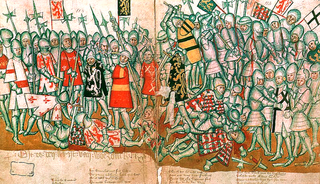
The Brabantsche Yeesten or Gestes de Brabant is a rhyming chronicle of some 46,000 verses written in the 14th and 15th centuries in the Middle Dutch language. It provides a history of the Duchy of Brabant, and the original five volumes were written by Jan van Boendale of Antwerp; his text was later extended to seven volumes by an anonymous continuator.

The name Persijn or Persyn originates from what is said to be one of the oldest and noblest families from Kennemerland. In the 13th century, a branch of the Persijn family concerns the lords of Waterland and Amsterdam. They resided in the lost castle of Huis te Velsen north of Haarlem. Its oldest known ancestor was Dirk Persyn, who was given the title of courtier of the Count of Holland in 1162.
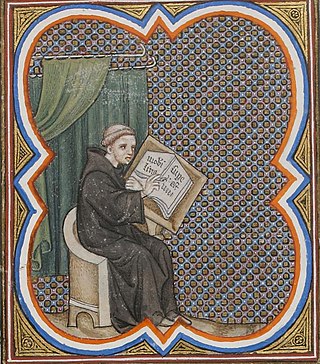
Primat was a French Benedictine monk and historian of the abbey of Saint-Denis near Paris. He composed two histories of France with a royal focus, one in Latin and the other in Old French. His Latin chronicle covers the years 1248 to 1277 but now survives only in an Old French translation and in excerpts incorporated into the works of others. It contains a detailed account of the reign of Louis IX, making it one of the most important contemporary sources for that reign. His French chronicle, the Roman des rois, covers the entire history of France down to 1223. It was completed around 1274 for Philip III and its presentation copy is extant. It is the earliest version of what would become the Grandes Chroniques de France, the first official history of France.

Wein van Cotthem was a Brussels clerk, chaplain and chronicler.

Floris I van Haamstede was Lord of Haamstede Castle on Schouwen, and of several other areas in Zeeland, Netherlands.

Jan II van Haamstede was lord of Haamstede and Haamstede Castle.
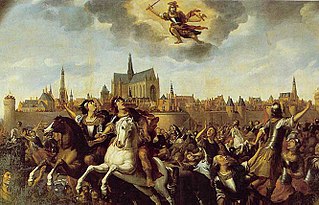
The Kennemer uprising was a rebellion of farmers in the County of Holland and Prince-Bishopric of Utrecht in the Holy Roman Empire, that took place between 1272 and 1274. The commoners or huislieden from the Kennemerland, a bailiwick within the County of Holland, rose up against their bailiff and the other nobles. The movement spread to the nearby West Friesland, Waterland and Amstelland. The lord of Amstelland, Gijsbrecht IV of Amstel decided to join the insurrenction and became the leader of the Kennemers. Later Utrecht, Amersfoort and Eemland also joined. Eventually, the Kennemers were defeated.
The Battle of Heiloo was a battle during the Friso-Hollandic Wars and the culmination of Count Floris V's first military expedition to West Frisia in 1272. The battle is described in Melis Stoke's Rijmkroniek van Holland and the chronicle of Johannes de Beke. Although the battle was won by Floris' forces, his goal of conquering West Frisia had not been achieved, and the count retreated shortly after.
References
- ↑ Antheun Janse (2016), "Beke, Johannes de", in Encyclopedia of the Medieval Chronicle , edited by Graeme Dunphy and Cristian Bratu. Retrieved 29 July 2021.
- ↑ The Johannes de Beke Chronicle up until 1430. Resources Huygens ING. Retrieved 29 July 2021.